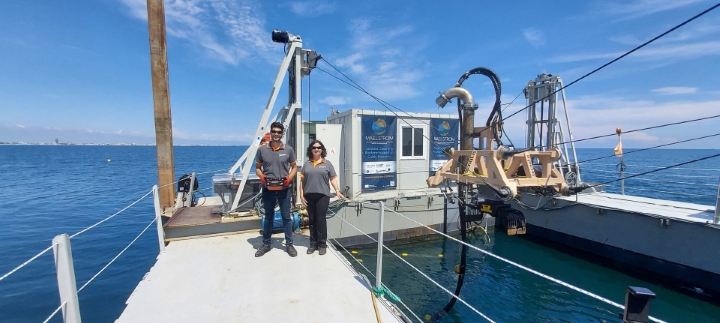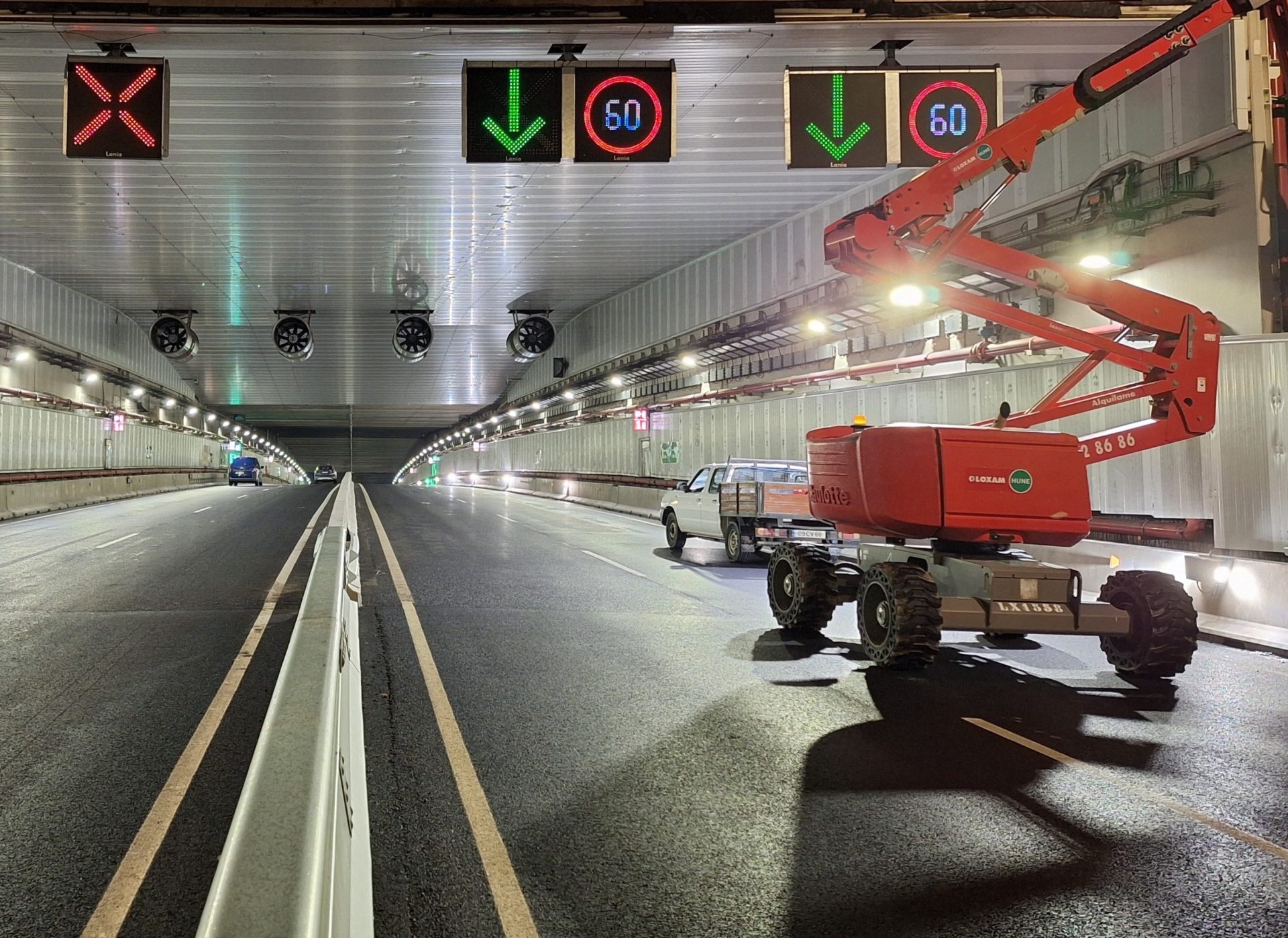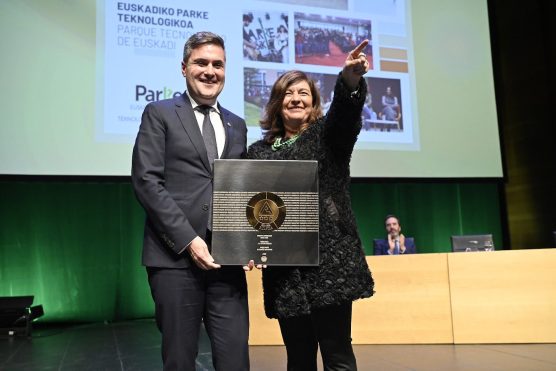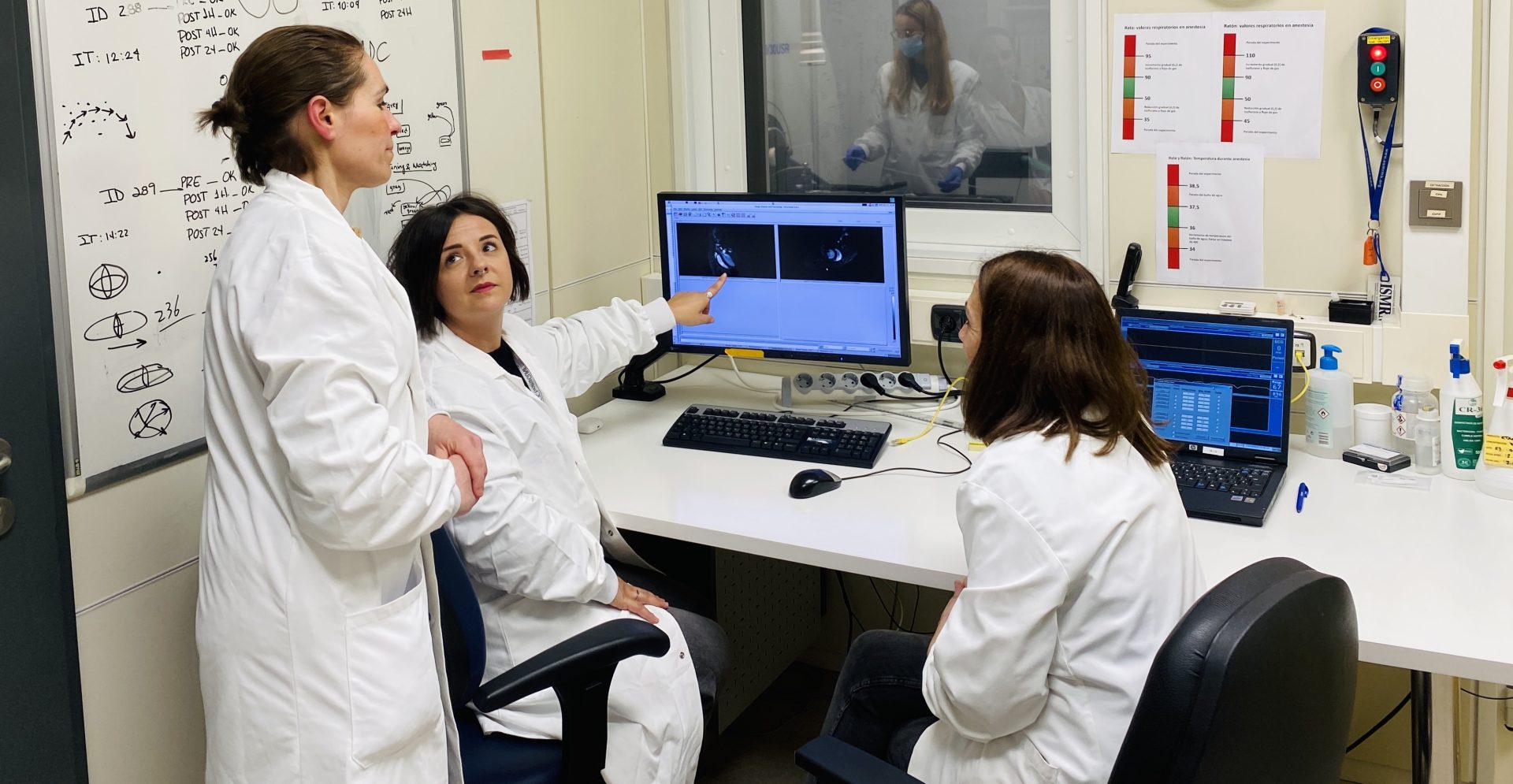TECNALIA’s seabed cleaning robot has already collected half a tonne of plastics in Venice

The innovative system created by the research and technological development centre, based on a floating platform and an underwater cable robot, has been collecting marine plastics, tyres and general rubbish from the bottom of one of the Italian city’s main canals for the past year.
This technology is part of a European initiative aimed at identifying, collecting, sorting and transforming the marine litter collected into recycled products, as well as assessing the impact of these solutions on the ecosystem.
This underwater robot is unique for its capacity to collect up to 130 kilos of waste in each dive, for its efficiency in selecting materials through sensors and artificial intelligence, and for being respectful of the marine environment.
 It has been a year since the TECNALIA research and technological development centre launched a robot to clean the seabed, which is being tested on the Sacca Fissola island in the Venice Lagoon. Since then, it has already collected half a tonne of plastics, although the initiative goes further and aims to identify, collect, classify and transform the marine litter collected into recycled products, as well as to evaluate the impact of these systems on the ecosystem. On the occasion of European Environment Week, the robot performed its first live demonstration last Friday in the presence of local authorities in Venice.
It has been a year since the TECNALIA research and technological development centre launched a robot to clean the seabed, which is being tested on the Sacca Fissola island in the Venice Lagoon. Since then, it has already collected half a tonne of plastics, although the initiative goes further and aims to identify, collect, classify and transform the marine litter collected into recycled products, as well as to evaluate the impact of these systems on the ecosystem. On the occasion of European Environment Week, the robot performed its first live demonstration last Friday in the presence of local authorities in Venice.
This development is a response to a major current problem, as the world’s rivers and oceans are being damaged by the amount of debris discarded by humans. It is estimated that there is currently an estimated 83 million tonnes of plastic waste in the oceans. Therefore, the current situation requires, firstly, preventing the entry of new plastics into the oceans, through responsible consumption and improving waste management systems in developing countries. Secondly, it is necessary to eliminate the existing stock of marine macro-plastics before they fragment into micro- and nano-plastics, which pollute the food chain. The recovery of these plastic materials from the ocean floor is an arduous and time-consuming task.
In this context, a European consortium made up of 14 partners from 8 different countries is working on the MAELSTROM project, which proposes an efficient and selective robotic solution for cleaning the seabed. TECNALIA has developed this robotic seabed cleaning system that consists of a floating platform with an underwater cable robot: eight cables wound on eight winches connect the mobile underwater system to the floating platform. For the collection of plastics and marine litter, the robot integrates two solutions: on the one hand, a suction line with a diameter of 150 mm for smaller litter and, on the other hand, a hydraulic gripper for gripping larger objects of up to 130 kilograms such as tyres, boxes, sections of sunken ships or fishing nets.
Artificial intelligence in the service of the sea
The robot has been designed to work at depths of up to 20 metres without damaging aquatic ecosystems, with integrated pressure and depth sensors. It also has vision cameras for visualising marine litter and an intelligent camera that allows the identification of marine litter by artificial intelligence and thus performs its semi-automatic collection, assisting the robot’s operator. Its activity can be carried out both independently and remotely under the guidance of an operator.
But in addition to implementing technologies for the collection of marine litter, this project aims to contribute to its recycling, following a circular economy perspective, as foreseen in the European Strategy on Plastics in the Circular Economy. Therefore, after an initial assessment of the type and weight of the recovered waste, it is classified according to its different characteristics and recycling profiles.
According to Mariola Rodriguez, head of the project at TECNALIA, “the main advantages of this technological solution are that it operates from the surface of the water and that we activate the collection heads only when necessary, achieving high selectivity and thus minimising the impact on the ecosystem. In addition, because the cable robot is rigid and fast, we can lift objects and clean quickly, so we also achieve collection efficiency. It is therefore the most efficient and environmentally friendly robot currently available for cleaning the seabed”.
Over the next year, the underwater robot will continue to clean the Venice seabed, while continuing to evolve and perfect its technology, so that once the project is completed in 2024, it will be ready for the market.




